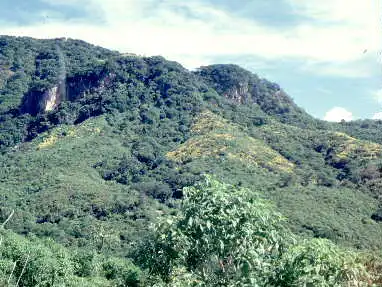Pinguicula gigantea ‘synalta’
TaxonomyPermalink
- Family: Lentibulariaceae
- Genus: Pinguicula
- Name: not yet published
- Sub-classification (Casper): link
- Publication: no publication
DescriptionPermalink
The plant looks closely related to Pinguicula gigantea.
In “Welcome to the wonderful world of the Mexican Pinguicula” by N. INAHO, this plant is mentioned to have leaves broader than Pinguicula gigantea with a wavy edge. It is said that the flower have narrower petals and a darker shade. The author mentions several varieties in Pinguicula gigantea clones. This plant seems to be the biggest known Pinguicula. A French grower, Patrice Charpentier observed a diameter of 28 cm for the rosette of his clone.
- more soon -
Origin and HistoryPermalink
This plant is sold in Australia in Triffid park (Australian carnivorous plants nursery). The micropropagation laboratory that provides the plants for Triffid Park got it from another laboratory that has now stopped his business. There was a message In the ICPS forum, about the story of this plant : According to the message, seeds have been collected by Dr. Alfred Lau, a missionary, botanist and plant collector who lived for many years in Mexico. They were sent to Andre Cleghorn (Flora Laboratories) who succeeded in growing it”.
Edward Read, another Pinguicula lover asked Andre Cleghorn to confirm this story. The answer was surprising : Andre claimed that he personally didn’t get it from Dr. Lau. More obviously, Dr. Lau has been staying at Edward Read’s home and was repeatedly questioned about the name ‘Synalta’. He immediately replied that he never heard of such a place or has any recollection concerning a Pinguicula ‘Synalta’ and said that he never collected the seeds !
I found a Sierra Sinaloa in Mexico, that is the closest name existing on the maps. Nevertheless, this plant is close to Pinguicula gigantea that comes from Ayautla, a locality very far from Sinaloa !
Who will be able clear this up ?
Location / MapPermalink
No data. From Mexico ?, from Guatemala ?…
HabitatPermalink
No data.
Introduction to HorticulturePermalink
My plant was obtained from Triffid Park, a carnivorous plants nursery in Australia.
Growth and PropagationPermalink
(North hemisphere, France near Paris, in a polycarbonate greenhouse - see the map
Life CyclePermalink
No data. I think this Pinguicula have the same life cycle as Pinguicula gigantea. (see link)
MediaPermalink
I use a 100 % mineral media : 2 perlite, 2 vermiculite, 1 small sand (for aquarium), 1 fine white sand, 1 pouzzolane (volcanic lava), 1 aqualit (expansed ceramic for aquarium). The aqualit can be replaced by 1 of pouzzolane. Plants in this media grow slower but have a stronger root system.
PotPermalink
Plastic, colour terracotta, diameter 12.5cm, height 12cm.
CultivationPermalink
I think that a slightly airy situation inside the greenhouse is important to avoid air stagnation. For this reason, I use a fan 24h/24h all the year round.
Watering is very important : from May to September (summer). I let the media drying slightly between two watering. I use rain water poured on the top of the pot taking care not to wet the rosette. From October to April, It is important to let the media drying completely (no watering) but with an atmospheric humidity of about 80%.
The mentioned months are indicative and can change according to your own growing conditions. In fact, when this Pinguicula begins to produce its non-carnivorous leaves, you have to stop watering and let the pot drying out completely. Inversely, when the plant begins to produce in early spring its carnivorous leaves, you have to progressively start watering again the pot.
TemperaturePermalink
During growth period, day temperatures are about 25°C but may reach 35°C when the sun is shining on the greenhouse in spite of the use of shading covers. Night temperatures are around 20°C. During resting period: day/night ~~~~ over freezing point. Lower temperature observed : - 4°C. I use an electronic petroleum heater to provide heat.
Flowering PeriodPermalink
not yet for my clone
PropagationPermalink
The plants can be propagated easily using non-carnivorous leaves separated from the rosette at the end of winter. You only have to carefully tear out the totality of the leaf particularly with it’s white base as the new plantlets will sprout from this area. Don’t try with the summer leaves, it is harder.
PicturesPermalink
|
Pinguiculasp. 'Synalta' Photo and plant : Patrice Charpentier |
Pinguicula sp. 'Synalta' Photo and plant : Patrice Charpentier |
|
Pinguicula sp. 'Synalta' Photo and plant : Patrice Charpentier |
Sinaloa Is Pinguicula sp. 'Synalta' in fact Pinguicula sp. 'Sinaloa' mislabelled ? This image in its original context, on the page : |
.webp)
.webp)
.webp)
